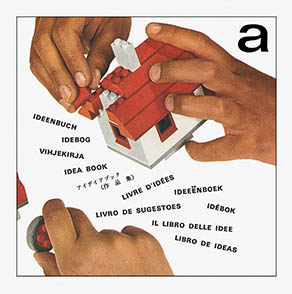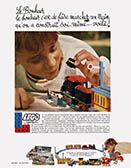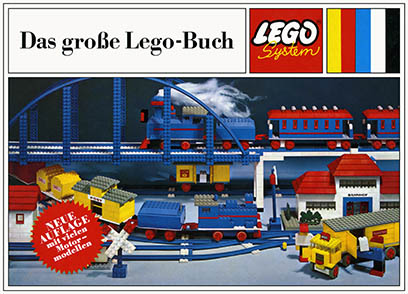The New Scale
Throughout the 1960’s the size of Lego sets and scale of the models had grown larger. In 1964 they introduced a series of model sets (Model Makers in the US, Planpacks in the UK) such as the 313 London Bus, 315 Taxi or 323 Train, that were based, not on the 1:87 scale of the Town Plan, but on the larger scale of the 2 x 2 wheel. The train sets introduced in 1966 and a series of truck models in 1967 were also designed around the 2 x 2 wheel and from that point on all new Futura development was based on this larger scale. Several of these new elements are shown in the 1967 product announcement brochures:
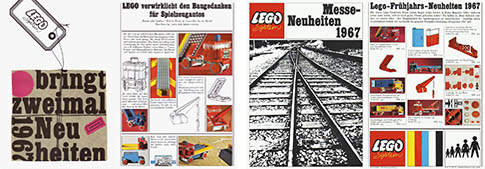
German retailer newsletters, 1967
So the Lego System had changed from the loosely scaled Town Plan to a larger, and much more consistent, scale. A scale that integrated nearly all of the sets in the range and one that is close to the mini-fig scale of today. It, of course, also signaled the end of what was left of the Town Plan.1 1. 1967 was the last year for individual 1:87 vehicle sales, the sole remaining Town Plan item. Beginning in 1968 the remaining vehicle inventory was packaged and sold as sets. Today these sets are some of the most valuable of all Lego collectables.
The Basic Sets
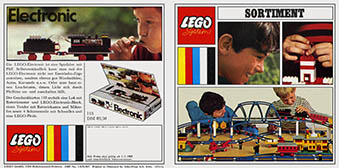
German Lego System catalog, 1968
Starting with the motor and train sets in 1966 and continuing with several new basic sets in 1967, Lego began phasing in yet another box design The new design consisted entirely of “idea book”-like images on the front and back. The now familiar Lego logo was relegated to the side of the box. In many ways it was similar to the box design used by Samsonite for several years.
Das große Lego-Buch
The 239 Idea Book, Das große Lego-Buch, published in 1968, was a 96-page, large-format (A4), hardbound book available only in Germany. The book included ideas and building tips for several themes, including a zoo, a harbor, a farm, a circus, even an entire city (Die neue Weit).
In all, Lego GmBH published three hardbound idea books, the 239 Wir bauen mit Lego (1966), the 239 Das große Lego-Buch (1968) 2 2. Yes, both books had the same Lego number.and the 241 Der Lego-Motor (1971), and these represent the absolute high point of the idea book. Although Lego would continue to produce many more idea books, the concept of model ideas were mostly replaced by step-by-step instructions.

